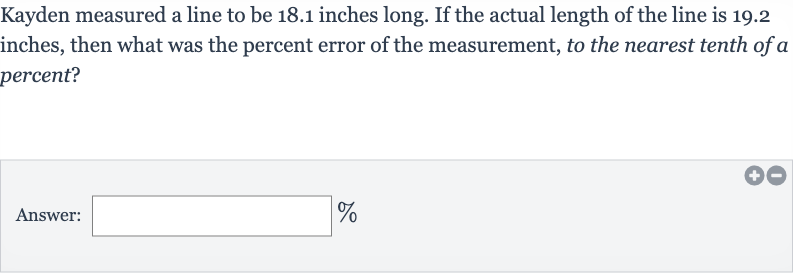AI tutor
Welcome to Bytelearn!
Let’s check out your problem:

Kayden measured a line to be . inches long. If the actual length of the line is . inches, then what was the percent error of the measurement, to the nearest tenth of a percent?Answer: ______
Full solution
Q. Kayden measured a line to be . inches long. If the actual length of the line is . inches, then what was the percent error of the measurement, to the nearest tenth of a percent?Answer: ______
- Understand percent error formula: Understand the percent error formula.Percent error is calculated using the formula: Percent Error = Here, the is the true length of the line, and the is the length Kayden measured.
- Plug in given values: Plug in the given values into the percent error formula.Actual Value = inchesMeasured Value = inchesPercent Error =
- Calculate absolute difference: Calculate the absolute difference between the Actual Value and the Measured Value.Absolute difference =
- Divide by Actual Value: Divide the absolute difference by the Actual Value.Division result =
- Perform division for decimal form: Perform the division to find the decimal form of the percent error.
- Convert decimal to percentage: Convert the decimal to a percentage by multiplying by . Percent Error =
- Round to nearest tenth: Round the percent error to the nearest tenth of a percent.Rounded Percent Error =
More problems from Percent error: word problems
QuestionGet tutor help
QuestionGet tutor help
QuestionGet tutor help
QuestionGet tutor help
QuestionGet tutor help
